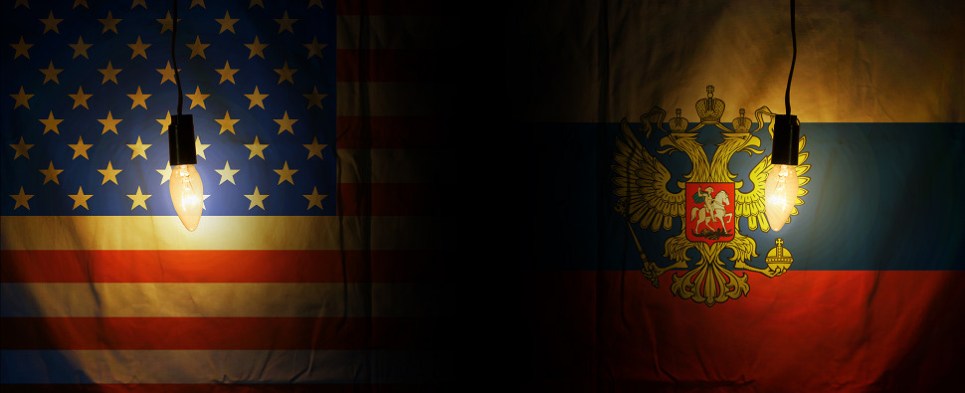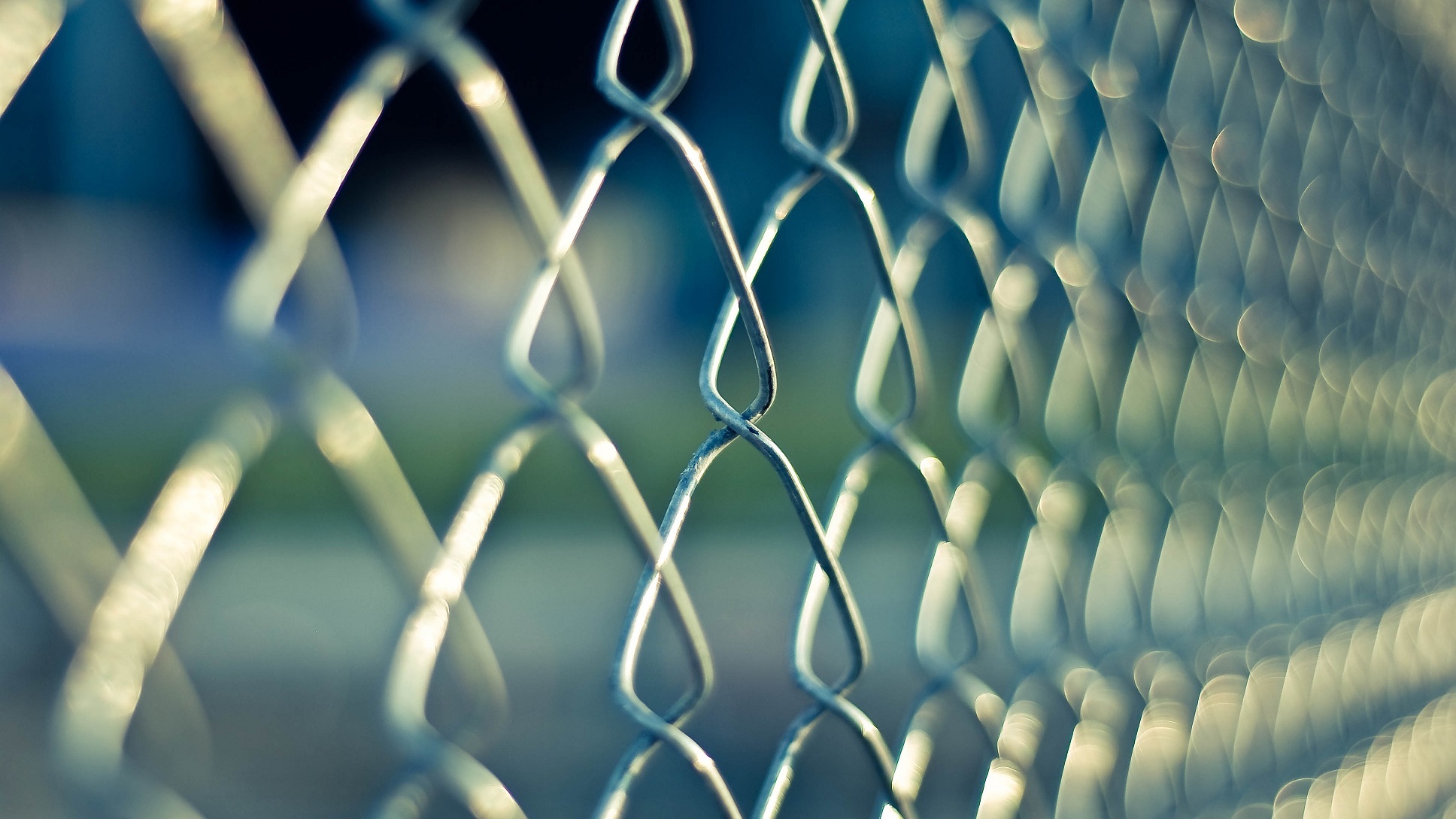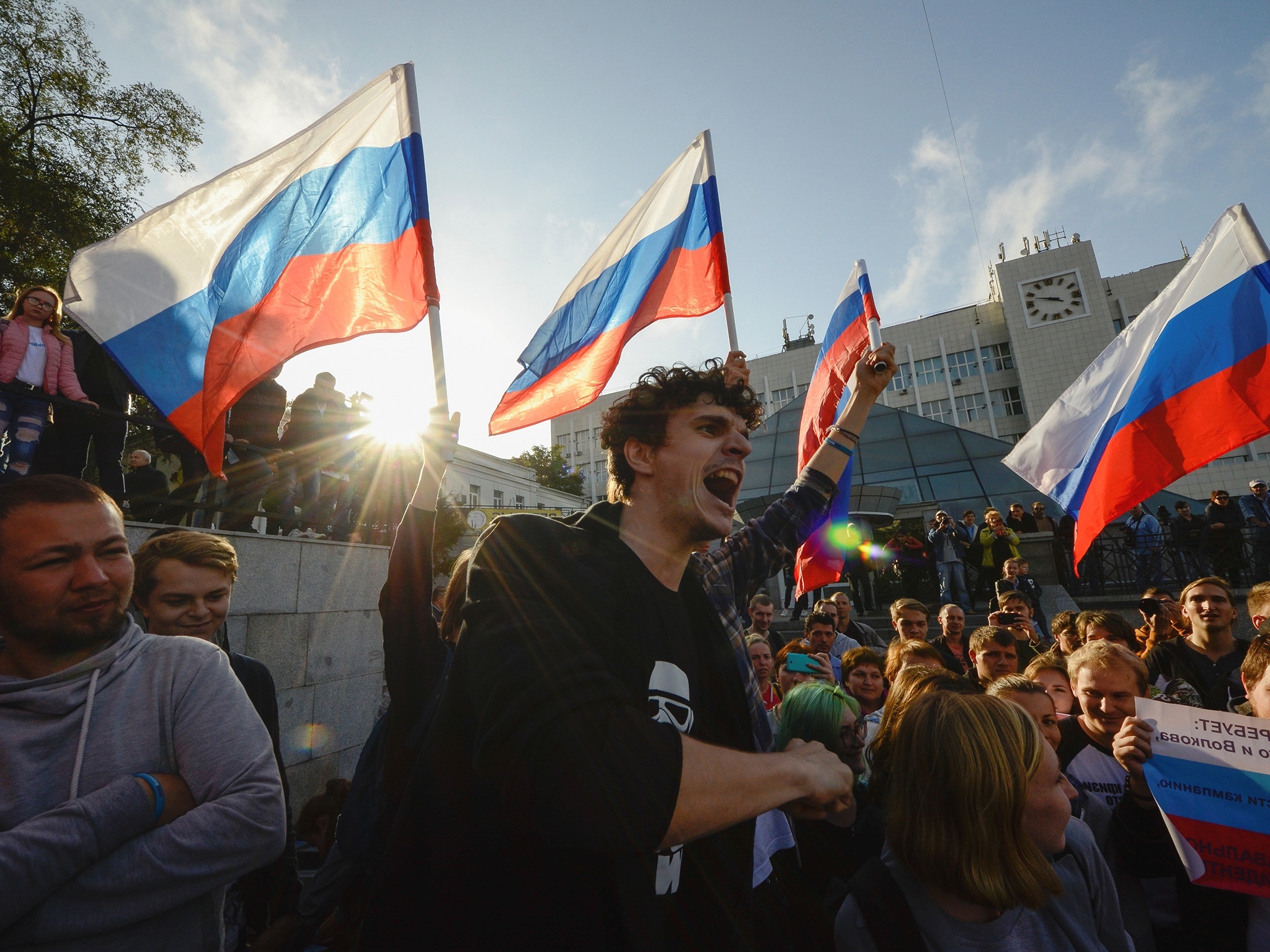
[alert type=white ]*This article was co-authored by Madalina Sisu Vicari and Nick Trickett[/alert]
Russia’s exports amounted to in 2016 $285 billion, led by the following sectors:: hydrocarbons ($176 billion, accounting for 62%), metals (nearly 10 percent), machinery (7.3%), chemical products (6%), and arms (2.2% at roughly $6.3 billion). Arms exports in particular allow firms to earn money outside of procurement programs.
Some hope that defense R&D spending can create larger net effects on economic growth beyond direct orders for resources or materiel by driving technological innovation. The expansion of US sanctions on Russian defense firms and intelligence entities in late October should be examined in light of the changing role exports play for Russian firms as scrutiny falls on their international deals in Washington.
Russia’s assertive geopolitical ambitions are reflected by increased defense spending beginning in 2003. Russia’s military expenditures had doubled by 2013. Military modernization focusing on leadership reform and rearmament with advanced technology became a pressing national priority after the Russo-Georgian War in 2008. This priority was then accentuated after the annexation of Crimea and ongoing conflict in Eastern Ukraine, which put Russia in a “state of heightened military readiness.” The state 2011-2020 armament program was a key piece of the reform process, calling for 19 trillion rubles in spending over a nine-year period. 80% of the budget was to be spent on arms purchases, 10% on research and development, and 10% on repairs and upgrades of existing systems. 75% of the program was slated to be spent after 2015.
Export revenues have been important for Russia’s manufacturers. In this regard, it is worth mentioning that Russia was the second largest arms exporter in the world in 2016, though it significantly lagged behind the United States. But Russia faces structural pressures on its ability to sustain export revenues to help finance the sector. State-owned Rosoboronexport (ROE) accounts for about 85% of Russia’s arms exports and sold $13.1 billion in arms abroad in 2016. 15 other companies legally authorized to export arms sell a further $2 billion.
ROE touted figures that over half of exports went to the Middle East and North Africa last year. But Asia and Oceania – particularly China and India – have been Russia’s most important markets as it has increased its arms sales abroad. That situation is likely to change. China has been increasingly developing its own manufacturing capabilities, in part by copying Russian weapons systems without permission, and is becoming a major arms exporter. India, the leading arms importer, remains the largest client for Russia’s arms sales, accounting for 38% of Russian exports between 2012-2016. However, India was designated a “Major Defense Partner” by the US, making it “the only country in the world authorized to receive both military and dual-use items under a Validated End User program.” Moreover, the United States offered a menu of “defense options” to India, including the Guardian UAV, aircraft carrier technologies, the Future Vertical Lift program, and F-18 and F-16 fighter aircraft.

Russia is losing its competitive advantage as its “cheap and deadly” gear faces an uphill battle for market share since Western producers are better positioned for the higher-end gear consumers like India or China increasingly need. As Russian firms pivot to higher-end gear in their trade with China, Beijing is also expanding its exports into markets in which Russia has been active, including Algeria, Indonesia, Nigeria, and Venezuela. India and Vietnam are the only important markets where Russia is not yet challenged by Chinese competition. Increased defense spending around the globe will provide opportunities for Russian exporters, but will require they become more efficient and competitively run.
A new armament program has been planned to cover 2018-2027 with a further 19 trillion rubles in spending planned, 6.8 trillion of which is to be spent between 2018-2020. Long-range supersonic and hypersonic precision weapons are a centerpiece of the new program. Relevant research and development should be watched for future export opportunities as Russia jockeys to maintain market share in the Middle East. Exports were seen to be a declining driver of the arms industry before 2014 due to growing procurement plans. That is less clear now but still holds true. Budget claims are somewhat obscured by law; military expenditures are now labeled state secrets in the budget. Though spending may be cut officially, it will be harder to assess what state money is actually going into the sector directly via official documentation. Further, state tenders for procurements are being classified making it more difficult to track spending.
Arms exports are an integral part of Russia’s foreign policy toolkit to establish closer relations with countries in the Middle East at the expense of the US and Europe. Intervention in Syria has presented Russia the opportunity to offer its weapon systems to signal its power, maintain export revenues, and enable Middle Eastern states to show to the West that they have strategic options. The ability to act as a regional arms dealer of second resort has helped the country’s industry increase arms exports this year while under sanctions.
The East-West signaling game has come to include NATO member Turkey since a failed coup attempt against president Erdogan in July of 2016. Turkey’s agreement to purchase the S-400 air defense system is a signal of rapprochement between Turkey and Russia but also an instrument by which Ankara can put pressure on its NATO Allies to make concessions with regard to the transfer of technology and know-how. The threat of sanctions hangs over the deal. Turkey and Moscow have finalized an agreement on how to finance the $2.5 billion deal, an opportunity to consider what effects sanctions have had thus far, what newer sanctions from Washington mean, and their aims.
Creating Headwinds
Since 2014, the United States imposed sanctions targeting Russia’s defense sector through two types of instruments : Directive 3 and military and defense-related restrictions. Under Directive 3, US individuals, companies and other entities (including foreign branches) are prohibited from transacting in, providing financing and other dealings in new debt of longer than 30 days maturity of designated defense companies by the SSI (Sectoral Sanctions Identification) List of Office of Foreign Assets Control (OFAC) Initially, the only designated company was Rostec and its subsidiaries but subsequently other Russian military majors such as Rosoboronexport and Russian Helicopters were added on the sanctions list.
[button color=”red” size=”big” alignment=”none” rel=”follow” openin=”samewindow” url=”https://www.vocaleurope.eu/?s=Russia”]Curious For More? [/button]
The second instrument consists in restrictions for the export of defense articles and defense services to Russia, and restrictions on exports, re-exports or transfers to Russia of items intended, entirely or in part, for a military end use or military end user in Russia. The European Union (EU) added sanctions banning direct trade of military goods as well as the export of dual-use goods for military use or military end-users. Russia also lost access to the 700 types of components produced by Ukrainian firms.
The latter in the case of the EU presented a real problem. At the time, Russia imported all of the components for its GPS system – GLONASS. A NATO report from October of 2015 estimated that imports accounted for 25-30% of Russia’s electronic components, largely from Europe. Economic sanctions and low oil prices in 2014 pressured budgets trying to meet new needs for import substitution. It was widely understood that import substitution plans would take significantly longer than hoped to take effect given the government’s financial resources. There has been progress but Russia as of yet has not successfully replaced technologically advanced imports with domestic production.
Shifting Focus
The US defense sanctions’ web was upgraded and expanded through the addition of new mechanisms to restrict Russia’s ability to raise export revenues under the aegis of the Countering America’s Adversaries Through Sanctions Act (CAATSA), adopted by US Congress on July 28, 2017 and signed by President Trump on August 2, 2017. The loss of revenues, while not a systemic threat to the defense sector at large, would be significant in specific instances. Airplane manufacturer Sukhoi accounted for 95% of the 110 billion rubles of contracts for foreign suppliers listed by state tenders. Sukhoi’s export of civilian aircraft and parts has come under threat from CAATSA. Missed deadlines have marred implementation, but, as will be shown below, there is significant leeway for the imposition of sanctions.
Section 231 of CAATSA legally mandates the imposition of sanctions to any person, US or non-US, who engages in a “significant transaction” with “a person that is part of, or operates for or on behalf of, the defense or intelligence sectors of the Government of the Russian Federation, including the Main Intelligence Agency of the General Staff of the Armed Forces of the Russian Federation or the Federal Security Service of the Russian Federation.” The State Department has targeted 33 Russian defense companies and six intelligence entities for the purposes of Section 231 with flexibility to designate more.
The list includes entities, mostly state-owned, which manage and generate significant financial flows within Russian military industrial complex, such as Rosoboronexport OJSC a state-controlled company, acting as intermediary for exports and imports of military arms and products, technologies and services. The company accounts for nearly 90% of Russia’s arms sales; in 2016, Russia accounted for almost 21 per cent of global arms sales
ROE is listed, given its predominant role as revenue-generator for the sector. Other significant companies listed include:
- Almaz-Antey (a conglomerate which is Russia’s main manufacturer of tools and missile defense and which is the developer of air system systems S-300 P and S-400)
- Rostec-Russian Technologies State Corporation (a company that owns VSMPO-AVISMA, which is the largest titanium manufacturer in the world and important supplier of Airbus and Boeing; more, VSMPO-AVISMA and Boeing are partners in Ural Boeing Manufacturing, a 50/50 equity joint venture between the two companies)
- Russian Helicopters JSC (in 2016, this company, which is part of Rostec, produced 32 per cent of the global helicopter fleet and 22 per cent of the global military fleet)
- United Shipbuilding Corporation (the largest shipbuilding company in Russia, accounting for 80 per cent of the domestic shipbuilding industry)
- United Aircraft Corporation (which holds the rights for brands such as MiG, Tupolev, Ilyushin, Sukhoi, SSJ 100 and MS-21).
The country’s internal security and counterintelligence service – the Federal Security Service (FSB), the external intelligence agency – the Foreign Intelligence Service (SVR), and the Russian military intelligence service – the Main Intelligence Directorate of the General Staff of the Russian Armed Forces (GRU) are among the intelligence entities targeted by the list. However, the 33 Russian defense companies and six intelligence entities targeted by the State Department are not themselves sanctioned at this time, although certain entities are already subject of previous US sanctions. For instance, companies such as Rosoboronexport, Rostec, Russian Helicopters, are subject of Directive 3, whereas FSB and GRU are subject of an order issued by former President Barack Obama in response to Russia’s cyber operations aimed at the US election.
The CAATSA sanctions toolkit
Under Section 231 of CAATSA, the President of the United States is required to impose, “on and after the date that is 180 days after the date of enactment of CAATSA,” five or more of the sanctions described below against individuals or entities that knowingly engage in “significant transactions” with persons that are a part of, or operating for or on behalf of, Russia’s defense or intelligence sectors.
The President has recourse to the following sanctions, as listed in Section 235 of CAATSA:
- Export-import bank assistance for exports to sanctioned persons
- Export sanctions for any goods or technology
- Loans from U.S financial institutions.
- Loans from international financial institutions
- Prohibitions on financial institutions
- Procurement sanctions (on any goods or services)
- Foreign exchange
- Banking transactions
- Property transactions
- Ban on investment in equity or debts of a sanctioned person
- Exclusion of corporate officers
- Sanctions on principal executive officers.
The law leaves the possibility for the President to waive the application of sanctions with respect to a person – either an individual or entity – only if he submits a written resolution that the waiver “is in the vital national security interests of the United States” or will further the enforcement of the law’s section; or a certification that the Russian government has made significant efforts to reduce its cyber intrusions to the appropriate congressional committee (A/N: the Committee on Foreign Relations in the Senate and the Committee on Foreign Affairs in the House).
Nevertheless, the administration does have considerable wiggle room to determine whether a transaction is “significant” for purposes of implementation of Section 231. For that, the totality facts and circumstances pertaining the transaction will be evaluated, on a case-by-case basis. Worthy of note, “the factors considered in the determination may include, but are not limited to, the significance of the transaction to US national security and foreign policy interests, in particular whether it has a significant adverse impact on such interests; the nature and magnitude of the transaction; and the relation and significance of the transaction to the defense or intelligence sector of the Russian government.”
The Approaching Tripwire
The language of CAATSA, as mentioned earlier, stipulates that sanctions must be imposed 180 days after the bill’s enactment. January 29 will mark that date, triggering the sanctions included in the bill at a point of no return unless Congress passes new legislation. At that point, president Trump can only waive the application of sanctions in the specific instances mentioned above. The approaching deadline could provide another source of tension between the White House and Congress over the execution of foreign policy.
There’s clear interest in Congress in ensuring that the law is applied, and some pundits claim that Turkey might be one of its “victims.” For instance, Senator Ben Cardin, ranking Democrat on the Senate Foreign Relations Committee, sent a letter to administration officials in last September that Turkey’s S-400 deal violates the law as written. Furthermore, Senator Cardin commissioned a recently released report, which in rather harsh language, calls for policy actions – CAATSA sanctions implementation included – aimed at countering Russian interference.
Turkey’s S-400 deal is a political test for a NATO member at a time when the alliance is in serious need of political unity. If Turkey follows through, not only will it risks losing access to US-made components and parts for its aerospace industry but it might become, potentially, a subject to sanctions application.and the latter situation would definitely follow from a political decision. The critical consequence of such decision is that it would further escalate political tensions between Washington-Ankara and it might overhaul the two countries’ relations. Nevertheless, given the growing disagreements between the United States and Turkey, amidst the most recent, which has the potential to spark into a conflict, relates to US plans to form a 30,000-strong Kurdish-led border security force in Syria, it is highly unlikely that Trump administration would have recourse to the CAATSA sanctions mechanism with Turkey. It would risk further alienating Ankara and irremediably damage to the relationship between the two NATO allies.
“I would like to remind you Alexander III, our emperor, once said that Russia has just two allies, the armed forces and the navy,” Vladimir Putin said. Keeping the inspiration driven by this narrative, one might say that, if implemented, some of CAATSA provisions would hit Russia, but also its closest allies.



